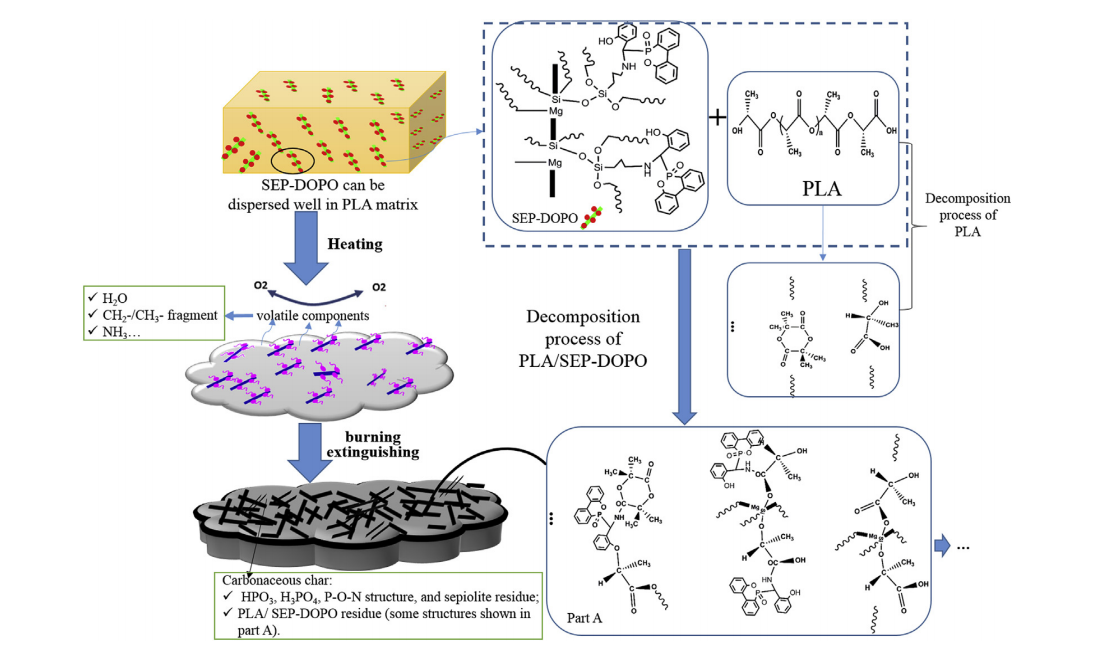
Peng Jiang*, Sheng Zhang*, Serge Bourbigot, Zhilin Chen, Sophie Duquesne, Mathilde Casetta. Surface grafting of sepiolite with a phosphaphenanthrene derivative and its flame-retardant mechani** on PLA nanocomposites. Polymer Degradation and Stability. 2019, 165, 68-79
https://doi.org/10.1016/j.polymdegradstab.2019.04.012
Abstract
Poly (lactic acid) (PLA), which is one of the most widely used biodegradable polymers, needs to be rendered flame retardant for use in textiles, automobiles, and electronics. Few environmentally friendly flame-retardant solutions exist for PLA mainly because of the nature of the additives (large amount introduced or the use of non-biodegradable organic additives). In this regard, natural sepiolite (SEP) is a known flame retardant for PLA mainly due to high loading (at least 25 wt %). In this study, SEP was surface-modified by grafting with 9,10-dihydro-9-oxy-10-phosphaphenanthrene-10-oxide (DOPO) via the condensation between amino groups and salicylaldehyde with a grafting ratio of approximately 12.8%. DOPO-modified sepiolite (SEP-DOPO) was then introduced to PLA to improve the fire performance of the nanocomposites. PLA containing 10 wt % SEP-DOPO showed improved dispersion compared to a mixture of 10 wt % DOPO/SEP in a PLA matrix. Moreover, the peak of the heat release rate (pHRR) measured using mass loss calorimeter reduced by 40.7% for a loading of 10 wt % SEP-DOPO. The synergetic effect between DOPO and sepiolite was evaluated. The TGA-FTIR result showed that un-grafted DOPO was degraded before the polymer matrix, which cannot enhance the flame retardancy of the PLA composite. The solid-state nuclear magnetic resonance (NMR) spectra of the charred residues confirmed that the formed Si-O-Si, H3PO3, and P-N crosslinking structure enhanced char formation in the condensed phase.
